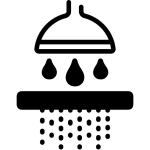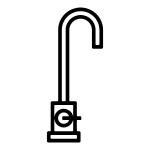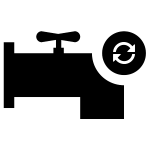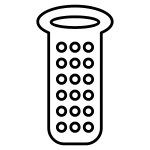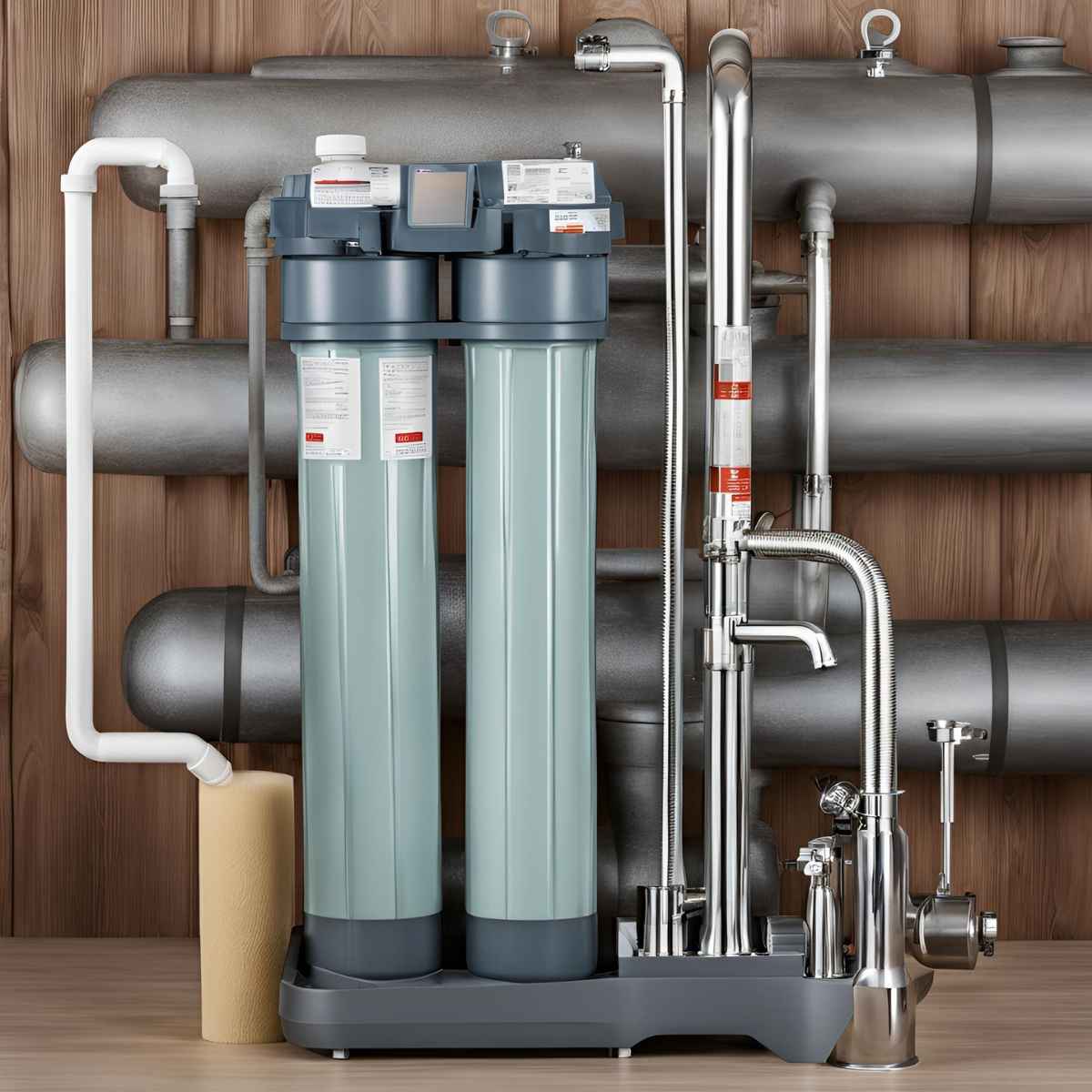When it comes to clean, safe, and healthy drinking water, reverse osmosis (RO) systems are among the most trusted filtration technologies worldwide. These systems are known for their ability to remove contaminants like lead, arsenic, chlorine, fluoride, and many more. However, one often overlooked but crucial aspect of an RO system is the tank pressure.
If your reverse osmosis water filter tank pressure isn’t properly maintained, your system might not work efficiently—or worse, not at all. This comprehensive guide will explain everything about RO tank pressure: what it is, why it matters, how to measure it, how to fix common pressure issues, and tips to ensure your system works flawlessly.
Table of Contents
- What Is a Reverse Osmosis Water Filter Tank?
- Why Tank Pressure Matters in RO Systems
- How Does Pressure Affect Water Flow and Filtration?
- Optimal Pressure for RO Water Tanks
- How to Check RO Water Filter Tank Pressure
- How to Adjust the Pressure in an RO Tank
- Common Problems Caused by Incorrect Tank Pressure
- When to Replace an RO Tank
- Tips for Maintaining the Right Tank Pressure
- FAQs About RO Water Filter Tank Pressure
- Conclusion
1. What Is a Reverse Osmosis Water Filter Tank?
A reverse osmosis water filter tank is the storage component of your RO system. It holds the purified water after it passes through the RO membrane and filters, so you have water available on demand.
The tank typically has two chambers:
- Upper chamber: Holds the filtered water.
- Lower chamber: Contains an air bladder that helps push the water out when you turn on the faucet.
The air pressure in the lower chamber is what we refer to as RO tank pressure, and it plays a crucial role in water delivery.
2. Why Tank Pressure Matters in RO Systems
The pressure in the tank determines how easily the filtered water flows from your faucet. If the pressure is too low, the water flow will be weak, and the tank might not fill properly. If it’s too high, the RO system may not function as it should, leading to damage or leaks.
In short, tank pressure directly affects:
- The speed of water flow from your faucet
- The capacity of your tank
- The efficiency of your filtration system
- The lifespan of the RO system components
3. How Does Pressure Affect Water Flow and Filtration?
An RO system relies on water pressure to push water through its semi-permeable membrane. When the pressure in the storage tank is correctly set, it allows water to be efficiently collected and dispensed.
- Low pressure = weak faucet flow, tank doesn’t fill up properly.
- High pressure = reduced water production from the membrane, premature shut-off of water supply.
The pressure needs to be balanced to ensure that your system filters and stores water efficiently.
4. Optimal Pressure for RO Water Tanks
So, what’s the ideal reverse osmosis water filter tank pressure?
- Empty tank pressure (pre-charge):
Should be 6–8 psi (pounds per square inch) when there is no water in the tank. - Full tank pressure:
Can go up to 30–40 psi, depending on your system.
Always check the manufacturer’s specifications, but 6–8 psi when empty is the industry standard for most residential RO tanks.
5. How to Check RO Water Filter Tank Pressure
Checking the pressure is simple and requires just a few steps:
Tools Needed:
- A pressure gauge (can be found at hardware stores)
- A tire pump or bicycle pump
- A TDS meter (optional, for checking water quality)
Steps:
- Turn off the RO system and shut the water supply.
- Open the RO faucet to release all water from the tank.
- Disconnect the tank from the system.
- Locate the air valve (usually under a blue cap) at the bottom of the tank.
- Use the pressure gauge to measure the pressure.
- If pressure is below 6 psi, use a pump to increase it.
- If above 8 psi, press the valve gently to release air.
6. How to Adjust the Pressure in an RO Tank
After checking the pressure:
- If it’s too low, use a pump to add air slowly.
- If it’s too high, release air gently until it reads 6–8 psi.
Pro Tip: Always measure tank pressure when the tank is completely empty. Otherwise, the water weight will skew the reading.
7. Common Problems Caused by Incorrect Tank Pressure
Incorrect tank pressure can lead to several issues, including:
A. Slow Water Flow
- Usually caused by low tank pressure.
- Water trickles instead of flowing.
B. Tank Doesn’t Fill
- Caused by high pre-charge pressure.
- The RO membrane can’t push water into the tank.
C. No Water from Faucet
- Could be due to zero tank pressure, bladder failure, or clogged filters.
D. Short Cycling
- System turns on and off too quickly.
- Can result from incorrect pressure or a faulty bladder.
8. When to Replace an RO Tank
Sometimes, the issue isn’t just pressure—it’s the tank itself. Over time, the internal bladder can wear out or rupture.
Signs You Need a New Tank:
- Tank doesn’t hold pressure even after adjustment.
- Water tastes off or smells bad.
- Tank makes odd noises (sloshing, hissing).
- It’s over 5–7 years old (average lifespan).
At Cuoll, we offer a wide range of replacement RO tanks and RO systems for every household and budget.
9. Tips for Maintaining the Right Tank Pressure
- Check pressure every 6 months or during filter changes.
- Always drain the tank fully before measuring or adjusting pressure.
- Use a digital pressure gauge for more accurate readings.
- If the system is not used regularly, flush and repressurize it every few months.
- Keep the tank away from heat sources to prevent air expansion.
10. FAQs About Reverse Osmosis Water Filter Tank Pressure
Q1: Can I overinflate the tank pressure?
Yes. Overinflating can cause the RO membrane to stop producing water, or the tank may not fill at all.
Q2: Do all RO tanks have the same pressure requirement?
No. While 6–8 psi is standard, always check your system manual for specifics.
Q3: What if my tank pressure is correct but water still flows slowly?
Check for other issues like clogged filters, a faulty membrane, or damaged faucet tubing.
Q4: How do I know if the air bladder inside the tank is broken?
If water comes out even when pressure is below 6 psi, or if you hear water gurgling inside without proper pressure—your bladder may be damaged.
Q5: Can I use a tire pump to add pressure?
Yes! A simple bicycle tire pump works perfectly to adjust RO tank pressure.
11. Conclusion
The reverse osmosis water filter tank pressure is a key factor in the performance and efficiency of your RO system. With the right pressure, your system will deliver clean, fresh, and safe water every time you turn on the tap.
Whether you’re dealing with slow flow, poor tank filling, or just want to optimize your system’s performance—keeping an eye on tank pressure is a must.
At Cuoll, we offer high-quality reverse osmosis systems, water filters, replacement tanks, shower heads, and bathtubs that make your home healthier and more comfortable. Don’t let water pressure problems stand in the way of your family’s well-being.


